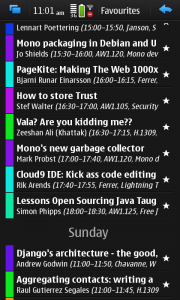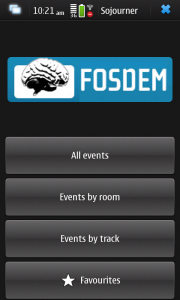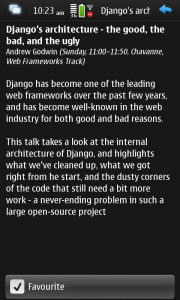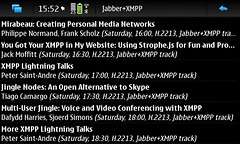Early last month, Lassi Syrjälä released Telepathy-Ring, Nokia’s Telepathy connection manager for GSM telephony, under the LGPL. The version used on the N900 talks to a proprietary daemon to drive the cellular hardware, but this new 2.x.y series has been ported to oFono, Intel and Nokia’s Free cellular modem daemon. I was trying out Ring using oFono’s phone simulator backend, until it was pointed out that oFono also supports my laptop’s built-in GSM chip. Oh really? Let’s see…
A few minutes of tweaking later, and I was looking at an apparently-unremarkable Empathy conversation window:

Ring needed a few little hacks to get this going, mostly because laptops’ GSM chips don’t generally support making GSM calls, which Ring expects to be able to do. But I didn’t have to touch any other Telepathy components’ source: I installed my Ring branch, opened the Empathy accounts dialog, created a new “tel” account, and here we are. +447771██████ in that screenshot is my real actual phone, and this conversation looks just how you’d expect.
Of course, right now this is a proof-of-concept; it’s not really ready for non-developers. I’m planning to clean up my Ring patches for submission upstream over the next few weeks, and will try to trick someone into writing a custom account configuration UI for Empathy; hopefully we can get this working properly pretty soon! Thanks to Lassi, Pekka Pessi (Ring’s original author), and others at Maemo; the oFono team; and other Telepathy and Empathy hackers for making this so straightforward!







